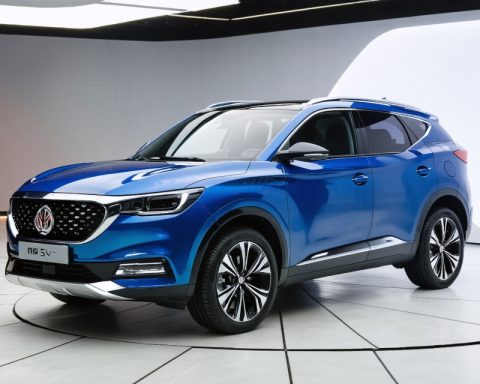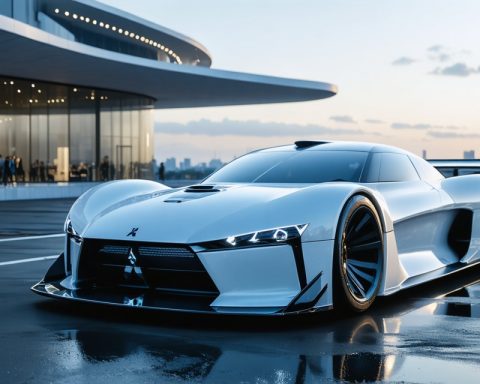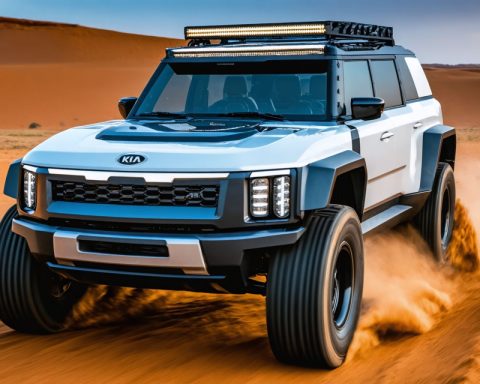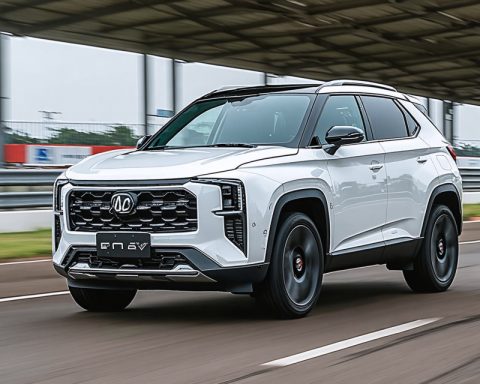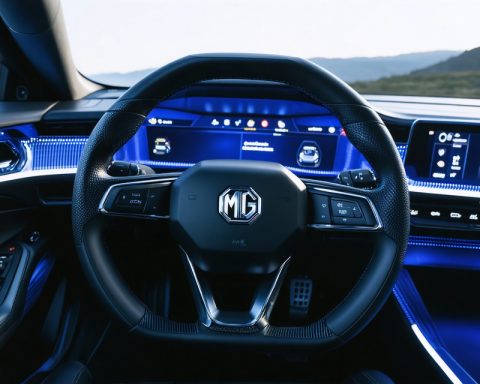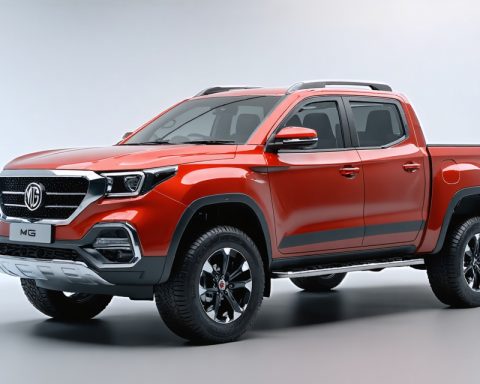- The Mitsubishi Triton returns to Australia with a diverse line-up of 18 variants, including new cab-chassis styles.
- Equipped with a 2.4-litre four-cylinder turbo-diesel engine, it generates 150kW and 470Nm of torque.
- Available in single, dual, and club cab configurations, with club-cab models offering four seats and automatic transmissions.
- Starting price lowered to $34,490, with the Triton GSR at over $63,000.
- Line-up includes customizable options like manual or automatic transmissions, and sub-one-tonne payload versions in GLX, GLX+, and GLX-R models.
- Positioned for both work and play, the Triton targets tradespeople and adventurers alike.
- Set for delivery by June 2025, offering a versatile and personalized driving experience.
Gliding onto the rugged landscapes of Australia, the Mitsubishi Triton roars back with unparalleled diversity in its line-up, captivating both the tradesman and the adventurer. The reimagined Triton, boasting an exhilarating selection of 18 variants, announces its return with the inclusion of cab-chassis body styles—transforming your off-road fantasies into reality.
With a 2.4-litre four-cylinder turbo-diesel engine purring under the hood, the Triton delivers a powerful 150kW of energy and 470Nm of torque. This robust beauty is now offered in single, dual, and club cab configurations. The freshly unveiled club-cab shines as a versatile four-seat wonder, embracing those who crave both work and leisure with equal fervor. Automotive aficionados can customize their rides, choosing between the seamless gear shifts of an automatic or the tactile engagement of a manual transmission.
Why the buzz? Well, Mitsubishi’s revamped line-up now starts at an eye-catching $34,490, shattering previous price tags by nearly $9000. This aggressive pricing strategy emerges alongside an array of customizable options, inviting owners to break free from conformity and mold the Triton to their lifestyle.
Mitsubishi extends this invitation — a nod to versatility — particularly through its cab-chassis and club cab options. Bruce Hampel, Mitsubishi’s esteemed general manager of product strategy, eloquently lauds the Triton’s yen for ‘working hard and playing hard.’ These models beckon to tradespeople who juggle professional demands with personal escapades.
The Triton GSR remains the crown jewel of this collection, sporting an attractive price tag just over $63,000. In a bid to cater to a myriad of lifestyles and needs, Mitsubishi has notably bloomed variations like the GLX, GLX+, and GLX-R, all offering sub-one-tonne payload versions.
Interestingly, club-cab variants are exclusively paired with automatic transmissions—a nod to user-friendly innovation—while single and dual-cab versions graciously offer a choice between manual and automatic, catering to the whims of its diverse clientele.
With delivery set for an anticipated release by June 2025, the latest Mitsubishi Triton beckons those eager to redefine their journey; to seize not just a ride, but a canvas of personal expression and boundless potential. As you pen the next chapter of your adventures, Mitsubishi promises a faithful companion in the Triton—ready to conquer terrains and exceed expectations. Adventure awaits—are you ready?
Unveiling the Mitsubishi Triton: A Comprehensive Guide to Your Next Off-Road Adventure
A Closer Look at the Mitsubishi Triton Line-Up
The latest iteration of the Mitsubishi Triton stands out as a versatile powerhouse in the automotive world, particularly for those who desire both rugged toughness and customization. While the Triton’s 18-variant roster was highlighted in your source article, let’s delve deeper into why this vehicle is stirring excitement among Australians.
Key Features and Specifications
– Engine and Performance: At its core, the Mitsubishi Triton is driven by a 2.4-liter, four-cylinder turbo-diesel engine delivering 150kW of energy and 470Nm of torque. This means you get impressive power whether you’re navigating urban streets or off-road trails.
– Configurations: The Triton excels in adaptability with single, dual, and the newly introduced club cab configurations, allowing individuals to find the perfect match for both professional and recreational activities.
– Transmission Options: While the club-cab variants cater to convenience with automatic transmissions, the single and dual cabs allow users to choose between manual and automatic, offering a tailored driving experience.
Insights and Predictions
– Market Trends: The pricing strategy for the new Triton is aggressive, with entry prices starting from $34,490. Such a move signals Mitsubishi’s intent to capture a larger share of the competitive mid-sized pickup market. Industry analysts predict that this could set a new benchmark for affordability in this segment.
– Customization as a Selling Point: More than ever, the ability to add personalized touches to vehicles is a consumer priority. Mitsubishi’s extensive array of customizable options for the Triton could make it a staple in both personal and commercial use fleets.
Pros and Cons Overview
Pros
– Versatile Configurations: Suitable for both leisure and work purposes.
– Competitive Pricing: Entry-level models are significantly more affordable than before.
– Strong Performance: Robust engine output ideal for varied terrains.
Cons
– High-End Variant Pricing: The top-of-the-line GSR model, while feature-rich, may seem costly compared to competitors.
– Exclusive Transmission Pairing: Automatic-only in club-cab variants may not appeal to manual enthusiasts.
How-To: Maximize Your Triton’s Potential
1. Personalization: Use Mitsubishi’s customization options to tailor your Triton to your specific needs, such as outfitting for specific trades or outfitting with adventure accessories.
2. Regular Maintenance: Ensure your Triton operates optimally by adhering to its maintenance schedule, especially if used frequently on rugged terrains.
3. Leverage Technology Features: Take advantage of built-in technology for improved navigation and connectivity during your drives.
Additional Facts and Real-World Use Cases
– Payload Capacity: With sub-one-tonne payload versions available, the Triton balances capability with conforming to light commercial vehicle regulations.
– Target Audience: Tradespeople, adventurers, and those requiring a practical yet robust vehicle for mixed-use are key demographics for this vehicle.
Actionable Recommendations
For potential buyers, consider what balance of work and play you need from your Triton and focus on selecting the variant that best suits your lifestyle. Whether you lean more towards professional utility or off-road adventures, there’s likely a variant tailored to your needs.
Final Thoughts
The Mitsubishi Triton’s return to Australia marks a significant moment for vehicle enthusiasts and professionals alike. With its combination of performance, customization, and pricing strategy, it’s poised to become a favorite among those needing a reliable and versatile vehicle.
For more information on the Mitsubishi Triton and other Mitsubishi models, visit Mitsubishi Australia.

